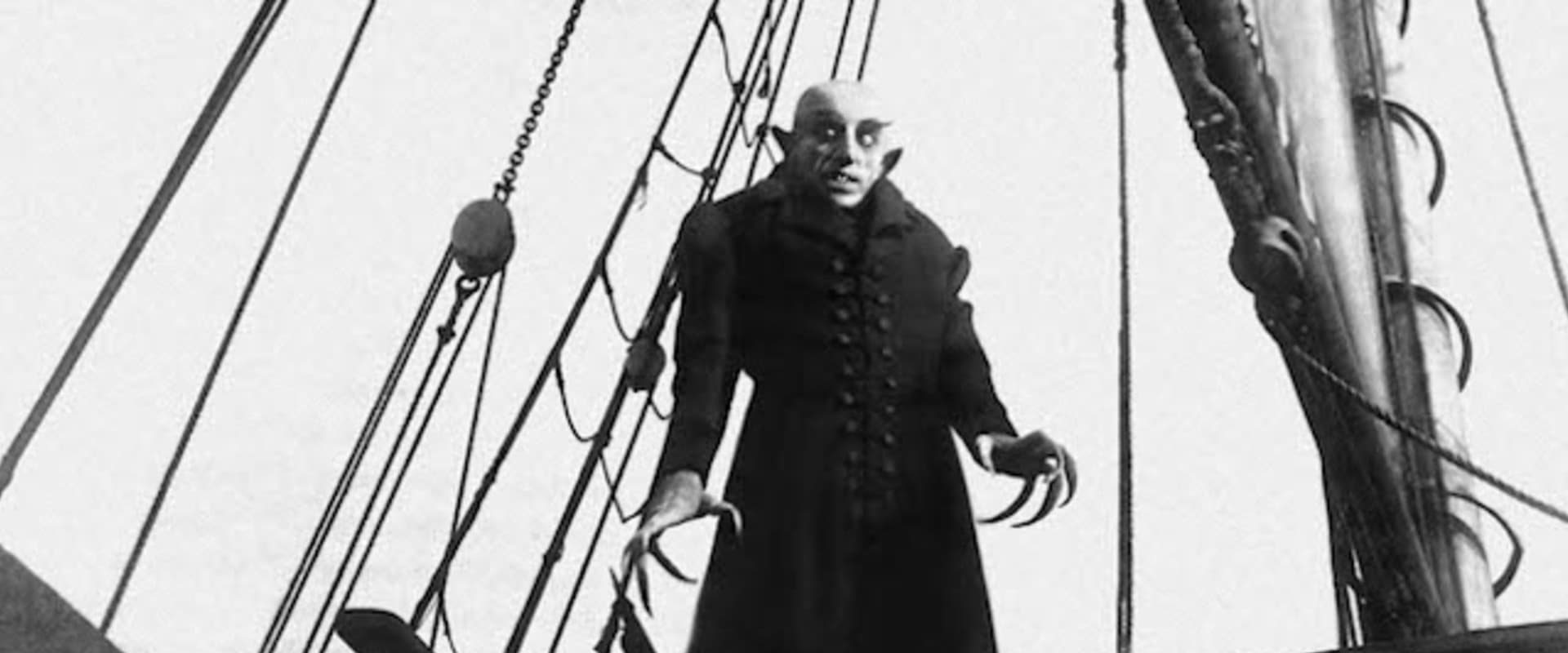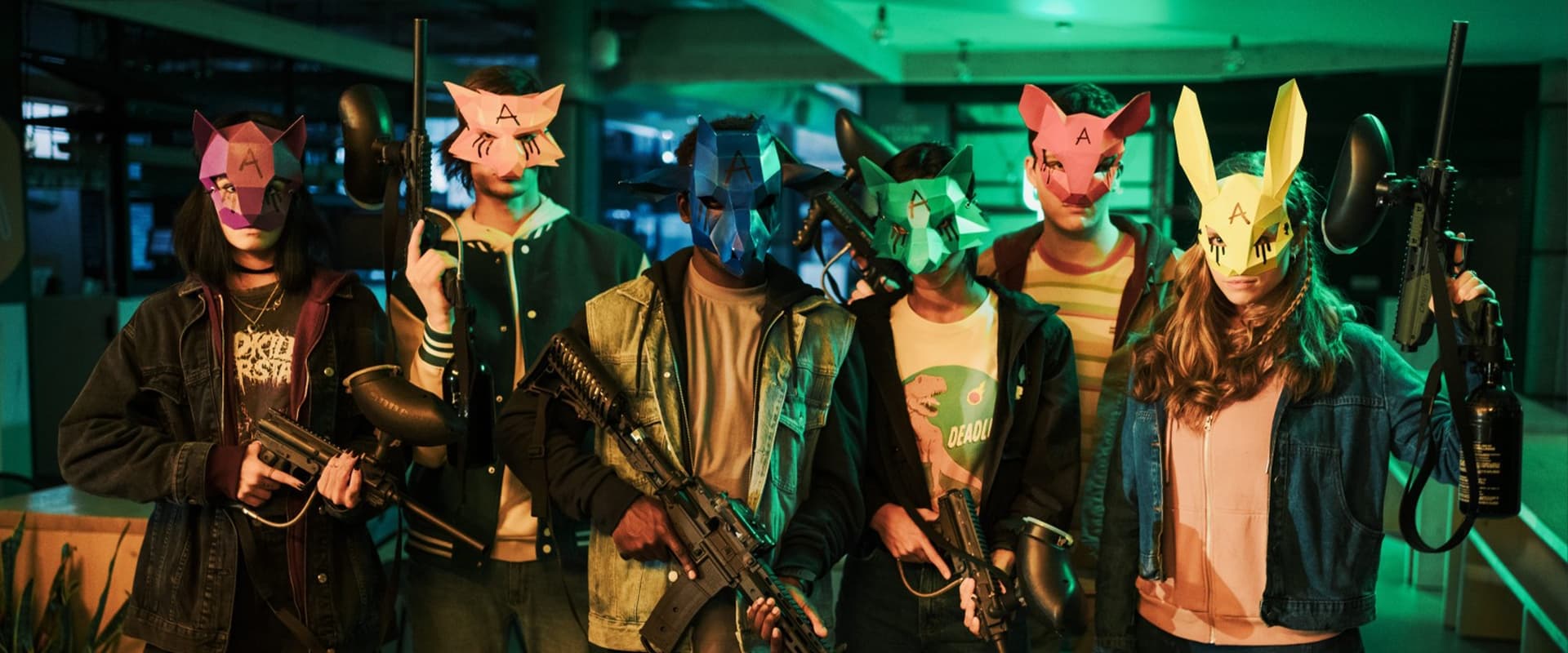You drag yourself into Nosferatu expecting to be chloroformed by reverence, sipping the historical significance like bitter medicine—and then, in a mild shock, you’re there, clinging to the edge of your armchair, rationing your interest, waiting for the monster to hurry up and pounce. Yes, I wanted to hate this film, as a preemptive strike against a curriculum of “milestones” that, more often than not, turn out to be sacred cows—bloated, unkillable, and astonishingly inert. But there’s a persistent magic here, of the slow, mossy, ghost-infested variety: Nosferatu defeated my silent-movie prejudice not by winning the argument, but by gnawing at my resistance until I had to surrender.
Let’s get this straight: Max Schreck’s Orlok is not a dashing, high-collared Dracula, peering over his cape and gliding into boudoirs—no, he’s something you’d sweep up from between the floorboards in an abandoned nursery, all vermin and curse. Not sexy, not even properly human. Schreck—appropriately named—looks as though he’s spent the last millennium squatting in a drainpipe, plotting the extinction of housecats. The makeup is legendary, yes, but “legendary” doesn’t do justice to the bodily sense of revulsion, the way those wet rat-teeth and fungal eyebrows crowd your field of vision. When Orlok rises from his coffin with the muscle-less grace of a centipede, you feel the air in the room change. If his ears stuck out any further, you’d expect him to navigate by echolocation.
This creature—this granddaddy of all cinematic vampires—stalks the shadows with real economy: barely there, but indelible. The miracle is that, through Schreck’s performance and Murnau’s shadowplay, Orlok remains perfectly, nightmarishly Other. Modern horror has never quite caught up; our vampires have all gone to finishing school, but Orlok is still waiting under the bed, unapologetic and undomesticated.
With all that said, I was bored. There, I’ve confessed it. The narrative, familiar as a bedtime story and twice as soporific for anyone who’s sampled Stoker or even caught Coppola’s red-velvet fever dream, shuffles forward like it’s hauling its own coffin. The images that once made audiences faint are now the antique curios of a musty museum. Nosferatu is spooky, yes—spooky in the way abandoned farmhouses are spooky when you most want to find the road back to town.
But, credit where it’s due: what Murnau does with a sliver of budget, he does beautifully. You feel the chill of those German expressionist shadows stretching across empty rooms, choking the cheap set-dressing with menace. Light and shadow dance a death waltz—lanterns flicker, and Orlok’s claw brushes the wall in a gesture that invented a thousand horror clichés. The pure, poetic touch of silent cinema is alive here, in every ghost-written title card and shiver of candlelight. The cast serves, the editing serves, the whole enterprise leans in to the gothic. There is atmosphere to spare, and none of it aged by time: it’s as if suspense was invented for, and still belongs to, these silent spaces.
But for all the influence—the DNA it donated to both horror and film noir—Nosferatu left me stranded behind its veil of reverence, counting the minutes until the dawn. The pacing, slower than Orlok’s transcontinental journey by coffin, made me restless. And, perhaps unfairly, the story’s contours were too familiar, too often told and too pallid to grip me. I liked the cast, and I admired the precision of the editing. I respected even the lugubrious poetic titles. But respect is not love, and I found myself aching for more—more Orlok, more tension, more shock.
To watch Nosferatu today is to watch through layers of cultural sediment and adaptation: you see shades of the Dracula you’ve read, the Coppola you’ve absorbed, the endless run of Demeters and brides and bloodsuckers that have made this story into a gothic folk song. Maybe the story fatigue is mine, and not Murnau’s fault. Yet the prickly pleasure is in the details: how Nosferatu, made forbidden by lawyers and resurrected by cinephiles, survived at all; how it established the blueprint, without which the genre would be a floppy balloon.
A word for the experience: time, silence, and dread. I watched by the pale glow of TV light, almost alone, save for shadows. The effect? Creepier than expected, a faint whiff of genuine terror. Nosferatu’s greatest triumph is not that it still terrifies, but that—against my will—it makes me want to climb back into the world of silent cinema and see what other monsters I’ve been wrong about.
Gothic, chilly, surprisingly poetic: even if I can’t love Nosferatu, I owe it a debt. We all do—it’s the parental shadow behind every horror film that ever worked. But acknowledging the ancestor is not the same as inviting him for dinner. Let’s just keep him in the darkness, where he belongs.


